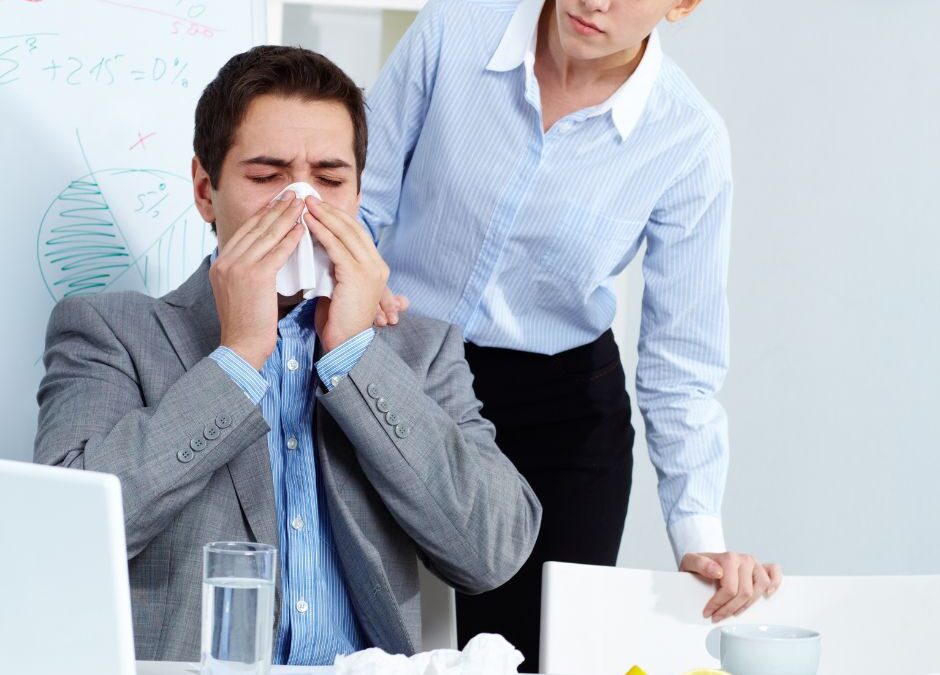When people think of workplace hazards, they typically think of coal mining or heavy construction–not office allergies. Office work may not carry as many health risks, but seasonal and environmental allergies can still disrupt productivity and limit morale–and all those coughs and sneezes can spread germs. In fact, allergy symptoms are the second most common cause of missed work. Here are some ways you can reduce allergens in an office building to help employees breathe easier.
- Switch air filters. MRV11 or MRV12 filters have the best rating among high-efficiency filters, and are relatively inexpensive when changed every 3 months.
- Repair water damage. If left too long, water damage can cause the growth of mold, a major allergen.
- Remove or replace carpeting. Carpeting is often the final resting place for dust, dust mites, animal dander, pollen–anything tracked in from the outside.
- Schedule regular cleanings, after regular office hours. While it’s important to have a regular cleaning service, it should not be scheduled when it can stir up dust and agitate employees’ allergies.
- Close the windows and run the air conditioning. When outside allergen levels are high, office windows should be closed. Air conditioning can help keep the air circulating through the office, preventing dust from settling too long.
- Implement a no-fragrance policy. Many people are sensitive to strong smells, such as perfumes and colognes. Offices may want to ask their employees to limit their use of more fragrant cosmetics, including scented hand lotion.
- Use a HEPA type air purifier. This can significantly reduce airborne particles.
If your office heating and cooling system is aggravating rather than helping allergies, it may be time to contact the experts at Smoak’s Comfort Control.

